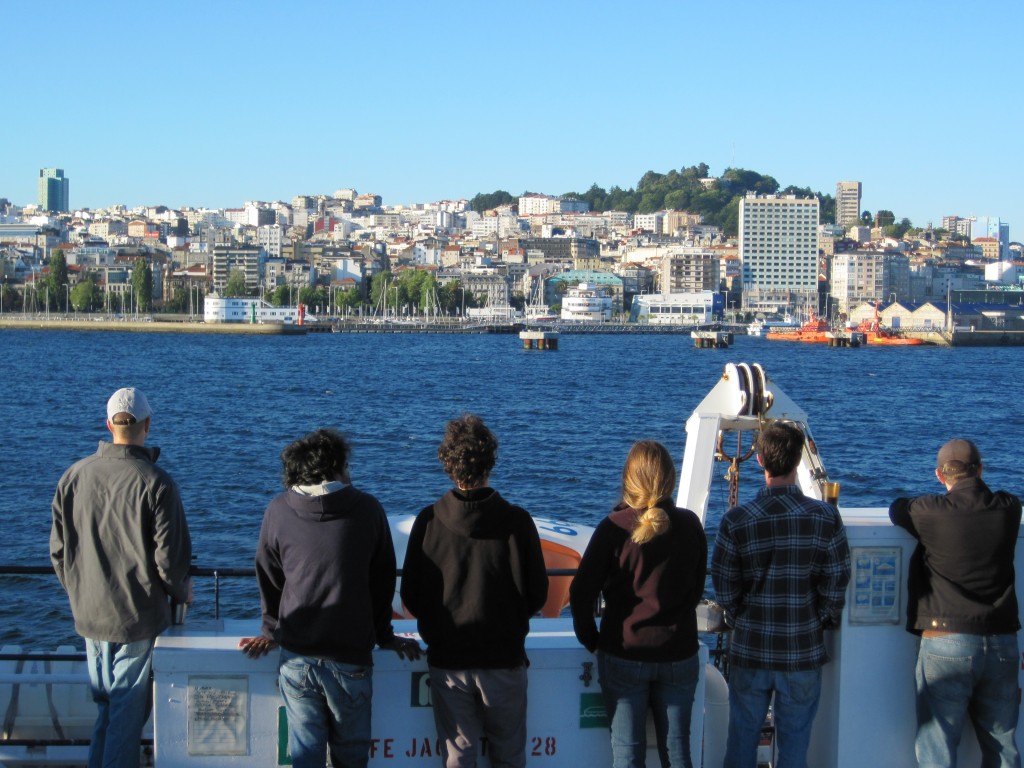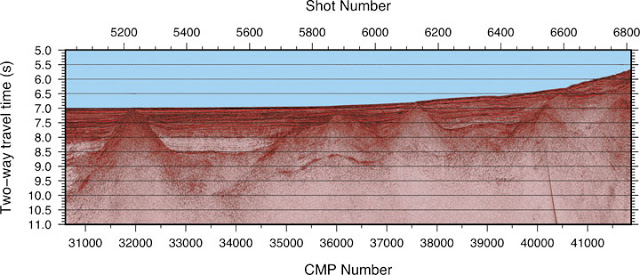This summer a number of University of Southampton geophysicists participated in a large, international seismic expedition to study continental breakup in the Deep Galicia Basin, offshore northwest Spain. The project includes acquisition of ocean bottom seismometer as well as multi-channel seismic reflection data onboard two separate research vessels, RV Poseidon and RV Marcus G. Langseth. RV Poseidon deployed the ocean bottom seismometers and will retrieve them in late August to early September. RV Marcus G. Langseth provided air gun sound wave sources and towed four 6-km streamers with sound wave detectors behind the ship.Seismologists use the sound waves to image structures below the sea floor in much the same way that ultrasound techniques image organs in the body. The seismometers in the streamers and on the ocean floor record reflections and refractions from the air gun sources as well as local earthquakes and allow us to build up a 3-D picture of the faults and continental blocks up to 15 kilometres below the sea floor.
I spent four weeks on board the RV Marcus G. Langseth during the month of June. It was my first time on a seismic vessel, and I was very excited to be on board observing first-hand how marine seismic data is collected and watching as the brand new data rolled in! The crew on board the ship were knowledgeable and patient teachers, bringing those of us new to marine seismic acquisition up to speed during the deployment of the streamers and guns, the data collection, and the instrument recovery.
Now that the data is collected, there are many years of processing and data analysis ahead to derive detailed velocity structures and fault models in this area. We are particularly interested in a strongly reflective fault surface – known as the “S reflector” – as well as the structures above and below it. This fault is thought to have formed when the crust was pulled apart. It is the boundary between the overlying crustal blocks and the underlying serpentinised mantle.
Professor Tim Minshull, Head of Ocean and Earth Science at the University of Southampton, is a lead researcher on the ocean bottom seismometer deployment. Dr. Gaye Bayrakci, Tessa Gregory, and Katherine Coates of University of Southampton also participated in the cruises. Other institutions involved in this research include University of Birmingham, Royal Holloway University, Rice University (USA), Columbia University (USA), and the Institute of Marine Sciences in Barcelona (Spain).
To read further news and experiences on this cruise, visit the cruise blog at galicia3d.blogspot.co.uk.


